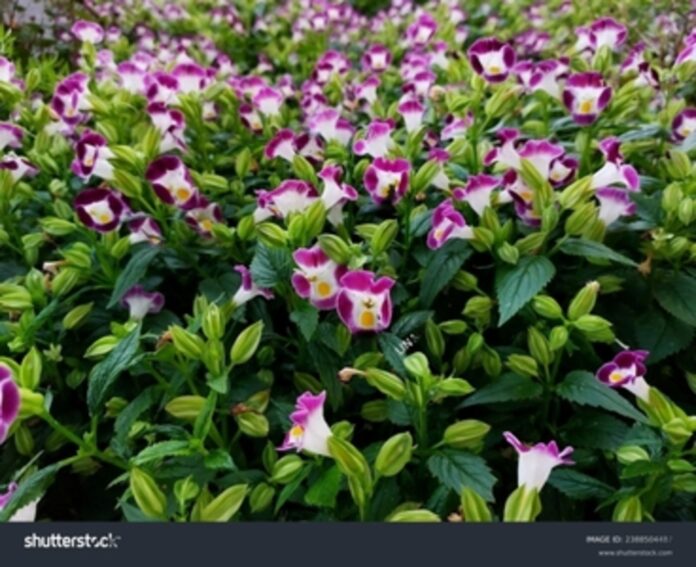Nature has bestowed an array of captivating flora, each with its unique charm and significance. Among these, the Catalina flower stands out as a symbol of elegance and resilience. This article delves into the enchanting world of the Catalina flower, exploring its characteristics, advantages, and disadvantages.
Understanding the Catalina Flower:
The Catalina flower, scientifically known as Epilobium canum, is a native plant to the western regions of North America. Its names include California fuchsia, hummingbird trumpet, and Catalina silver bush. This perennial shrub is renowned for its striking tubular flowers that resemble miniature trumpets in various shades of red, pink, and purple. The plant’s scientific name, Epilobium canum, reflects its association with the evening primrose family.
Characteristics of the Catalina Flower:
Appearance:
The Catalina flower boasts a unique and eye-catching appearance. Its tubular blossoms, often about 1 to 2 inches long, make it a favourite among gardeners and nature enthusiasts. The vibrant colours and delicate structure of the flowers contribute to their allure.
Blooming Period:
Catalina flowers typically bloom from late spring through early fall, attracting pollinators such as hummingbirds and butterflies. The prolonged blooming period ensures a consistent burst of colour in gardens and natural landscapes.
Adaptability:
One of the remarkable features of the Catalina flower is its adaptability to various environments. It thrives in multiple soil types and is well-suited for full sun and partial shade conditions. This adaptability makes it an excellent choice for landscaping projects with diverse requirements.

Advantages of the Catalina Flower:
Wildlife Attraction:
The tubular shape of Catalina flowers is perfectly designed to attract hummingbirds. The nectar-rich blossoms serve as a valuable food source for these agile creatures, enhancing biodiversity in the surrounding ecosystem.
Drought Tolerance:
Catalina flowers exhibit impressive drought tolerance, making them suitable for regions with water scarcity or in landscapes with desired low-maintenance plants. Their ability to withstand dry conditions adds to their appeal for eco-conscious gardeners.
Erosion Control:
The Catalina flower’s deep root system aids in preventing soil erosion. Planting strategically helps stabilize the soil, making it an excellent choice for landscaping projects in areas prone to decay.
Aesthetic Value:
Beyond its ecological benefits, the Catalina flower contributes significantly to the aesthetic appeal of gardens, parks, and natural landscapes. The vibrant colours and unique trumpet-shaped blossoms add a touch of elegance to any setting.
Disadvantages of the Catalina Flower:
Invasive Potential:
While Catalina flowers are generally well-behaved in their native habitats, they may exhibit invasive tendencies in certain non-native regions. Gardeners in such areas need to be cautious and monitor the spread of the plant to prevent it from outcompeting native species.
Limited Range:
The Catalina flower’s natural habitat is limited to the western regions of North America. This geographical restriction may pose a challenge for individuals residing in other parts of the world who wish to cultivate this beautiful plant.
Common Questions About the Catalina Flower:
How to Care for Catalina Flowers?
- Catalina flowers thrive in well-drained soil and require minimal water once established. Pruning in late winter or early spring promotes healthy growth and abundant blooming.
Can Catalina Flowers Be Grown in Containers?
- Catalina flowers can be grown in containers, provided they have proper drainage. Container gardening allows individuals with limited outdoor space to enjoy the beauty of these flowers.
What Pests or Diseases Affect Catalina Flowers?
- Catalina flowers are generally resistant to pests and diseases. However, occasional issues such as aphids or powdery mildew may arise, which can be addressed with appropriate treatments.
Are Catalina Flowers Suitable for Xeriscaping?
- Absolutely. The drought-tolerant nature of Catalina flowers makes them an excellent choice for xeriscaping, where water conservation is a priority.
Conclusion:
In conclusion, the Catalina flower is a testament to nature’s marvels, offering both visual delight and ecological benefits. While its enchanting appearance and adaptability make it a popular choice for gardens, it’s crucial to be mindful of its potential invasiveness in certain regions. By understanding the Catalina flower’s characteristics, advantages, and disadvantages, we can better appreciate and responsibly cultivate this captivating plant, ensuring its beauty thrives in harmony with the environment.
visit:infomagzines.com















